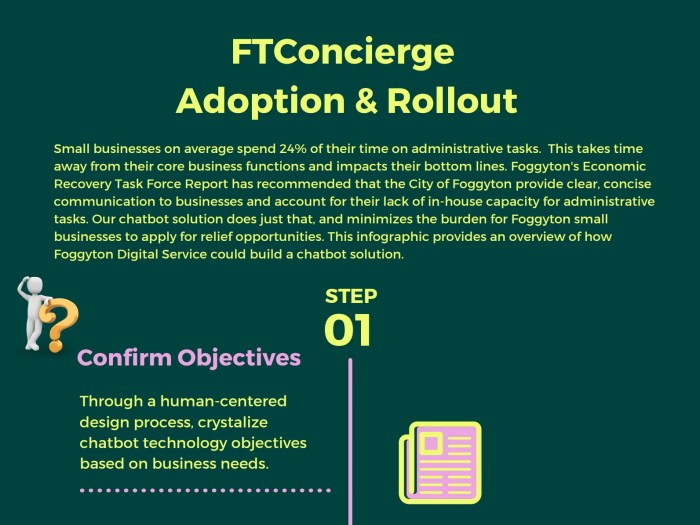Coronavirus help for businesses is crucial in navigating the pandemic’s impact. This guide dives deep into government assistance programs, financial relief options, and operational adaptations to help businesses thrive. From adapting to remote work to long-term recovery strategies, we’ll explore every aspect of business resilience in the post-pandemic world, especially for small businesses.
This comprehensive guide explores a range of solutions, including government grants and loans, alternative financing, and industry-specific support. We’ll also cover operational adjustments, employee support, and crucial strategies for navigating supply chain disruptions.
Government Assistance Programs
Navigating the complexities of government assistance programs can be daunting for businesses impacted by the coronavirus. These programs offer crucial support, but understanding the specifics of each is vital for accessing the right aid. This section details various programs, their eligibility criteria, application processes, and funding amounts, helping businesses make informed decisions.
Types of Government Assistance
Government aid programs for businesses impacted by the coronavirus come in various forms. Understanding the differences between grants, loans, and tax credits is essential to selecting the most appropriate option. Grants are typically non-repayable funds, while loans require repayment with interest. Tax credits reduce the amount of taxes owed.
Overview of Programs
| Program Name | Eligibility Criteria | Application Process | Available Funding Amounts |
|---|---|---|---|
| Paycheck Protection Program (PPP) | Small businesses, sole proprietorships, and non-profits. Specific criteria based on industry and employee count. | Apply through participating financial institutions. Detailed information on eligibility requirements and application forms are available on the SBA website. | Varying amounts based on average monthly payroll and number of employees. Forgivable loans up to $10 million. |
| Economic Injury Disaster Loan (EIDL) | Businesses experiencing a significant economic downturn due to a declared disaster, including the coronavirus pandemic. Demonstrate financial hardship. | Apply online through the SBA website. Complete the application form with accurate financial information. | Up to $2 million in loans and grants. Grant portion is for working capital. |
| Shuttered Venue Operators Grant | Businesses that operate live venues (restaurants, theaters, concert halls). | Apply online through the SBA website. Demonstrate financial hardship due to closure. | Grants to cover operating expenses. |
Eligibility Criteria and Application Procedures
The eligibility criteria for each program vary significantly. For instance, the PPP has specific employee count and industry requirements, while the EIDL focuses on demonstrating a substantial economic impact. The application process also differs. Some programs require applying through specific financial institutions, while others use online platforms. Thorough research into the program’s guidelines and requirements is essential.
Navigating the challenges of coronavirus-related business support can be tricky. Luckily, various government initiatives are helping. However, understanding how and why some tech and software companies thrive, like in this new research new research how and why some technology and software firms grow more , could offer valuable insights for other businesses looking to adapt and grow during these times.
This knowledge could potentially inform future strategies for coronavirus-related business support programs, ensuring they are as effective as possible.
Required Documentation
Accurate documentation is crucial for successful application. Examples include financial statements, tax returns, payroll records, and supporting documentation demonstrating the impact of the pandemic. The required documents will vary based on the specific program. Consult the official program guidelines for a comprehensive list. Carefully review all documentation requirements and ensure accuracy to avoid delays.
Understanding Grant, Loan, and Tax Credit Differences
Grants are non-refundable funds, loans require repayment with interest, and tax credits reduce the tax liability. Each option has distinct implications for the financial health of a business. Consider the long-term financial implications when choosing between these options.
Financial Relief Options: Coronavirus Help For Businesses
Navigating the financial challenges of a crisis like the coronavirus pandemic requires a multifaceted approach. While government assistance programs are crucial, businesses often need supplementary support to fully recover. This section explores alternative financial relief options beyond government aid, focusing on their specifics, advantages, and drawbacks.Understanding the diverse range of financial relief options can help businesses make informed decisions about their recovery strategies.
These options can provide crucial bridging capital to maintain operations, manage cash flow, and ultimately, ensure long-term viability.
SBA Loans
Small businesses often benefit significantly from the Small Business Administration (SBA) loan programs. These programs are designed to provide crucial financial support during economic downturns. Eligibility criteria and terms vary based on the specific loan type, but generally involve demonstrated need and adherence to SBA guidelines. Businesses must meticulously prepare financial documents and demonstrate the impact of the crisis on their operations.
- Types of SBA Loans: The SBA offers various loan types, including 7(a) loans, which provide working capital and long-term financing; 504 loans, designed for long-term fixed assets; and microloans, for smaller businesses requiring less capital.
- Eligibility Requirements: Eligibility criteria include a sound business plan, good credit history, and a documented need for the loan to overcome the crisis. The SBA often requires financial statements, including balance sheets, income statements, and cash flow projections. Business owners should carefully review the requirements and seek professional advice.
- Terms and Conditions: Loan terms and interest rates depend on the loan type, the business’s financial profile, and prevailing market conditions. Borrowers should carefully evaluate interest rates, repayment schedules, and associated fees before accepting a loan offer.
Lines of Credit
Lines of credit provide businesses with a readily available pool of funds, which can be accessed as needed. This flexibility is particularly valuable for businesses facing fluctuating cash flow needs. Businesses can borrow and repay funds as required, avoiding the commitment of a traditional loan.
- Advantages: Lines of credit offer flexibility, allowing businesses to draw funds when needed, and repay as the business’s cash flow improves. This is particularly beneficial for seasonal businesses.
- Disadvantages: Interest rates on lines of credit can fluctuate, and fees associated with using the line can add up, particularly if used excessively. Maintaining a strong credit profile is critical for securing favorable terms.
- Eligibility Requirements: Businesses must meet specific creditworthiness standards, often involving a thorough financial review. The lender assesses the business’s ability to repay the borrowed amount and its overall financial health.
Alternative Financing
Alternative financing options include crowdfunding, peer-to-peer lending, and invoice financing. These methods often offer faster approval times compared to traditional bank loans, although terms may vary. Crowdfunding can be particularly useful for raising smaller amounts of capital.
- Crowdfunding: Crowdfunding platforms allow businesses to solicit capital from a large number of individuals. This can be an effective way to raise capital, but businesses need to build a strong online presence and articulate a compelling narrative.
- Peer-to-Peer Lending: Peer-to-peer lending connects businesses with individual investors, offering potentially faster approval times than traditional loans. The interest rates can vary depending on the borrower’s credit profile and the prevailing market conditions.
- Invoice Financing: Invoice financing allows businesses to receive immediate funds by selling their outstanding invoices to a third party. This can be beneficial for businesses with slow-paying clients, but businesses need to understand the fees associated with the financing and ensure the terms align with their cash flow needs.
Exploring Avenues for Recovery
Businesses facing financial challenges should proactively explore these avenues for recovery. A combination of strategies, including government assistance, SBA loans, lines of credit, and alternative financing, can create a comprehensive recovery plan. Professional guidance from financial advisors or business consultants can be invaluable during this process.
Operational Adaptations

The COVID-19 pandemic forced businesses to re-evaluate and adapt their operational models. This required swift adjustments in areas like remote work, supply chain management, and overhead reduction to maintain viability and continuity. Companies had to find innovative solutions to maintain productivity and profitability while navigating the unprecedented challenges of the pandemic.
Strategies for Adapting Business Operations
Businesses employed various strategies to adapt to the changing circumstances. These included shifting to remote work models, streamlining operations to reduce overhead, and re-evaluating and adjusting supply chains to maintain a steady flow of goods and services. These strategies were crucial for business survival and resilience during the pandemic.
Remote Work Implementation
Implementing a successful remote work policy required careful planning and execution. Clear communication and robust technology infrastructure were essential for maintaining productivity and communication across distributed teams. Businesses had to equip employees with the necessary tools and training to work effectively from home. This included providing access to high-speed internet, reliable equipment, and clear guidelines for communication and collaboration.
- Establishing Clear Communication Protocols: Businesses established clear communication channels and guidelines for remote teams. This involved utilizing video conferencing tools, instant messaging platforms, and regular team meetings to maintain consistent contact and collaboration.
- Providing Necessary Equipment and Support: Companies provided employees with the required equipment (computers, internet access) and technical support to facilitate smooth remote work. They also offered training on using new technologies and software to maximize productivity.
- Adapting Workflows and Processes: Businesses re-engineered workflows and processes to accommodate remote work. This included redesigning tasks, implementing project management tools, and establishing clear guidelines for communication and collaboration across geographical locations.
Supply Chain Adjustments
The pandemic exposed vulnerabilities in traditional supply chains. Businesses had to find alternative suppliers, diversify sourcing, and implement strategies for resilience. This included building up inventory, establishing backup plans for transportation disruptions, and strengthening relationships with trusted partners.
- Diversifying Sourcing: Companies sought to diversify their supply sources to reduce reliance on single suppliers and mitigate risks associated with potential disruptions.
- Strengthening Relationships with Suppliers: Building strong relationships with suppliers became critical for ensuring a steady flow of goods and services. Businesses focused on developing trust and long-term partnerships.
- Establishing Backup Plans: Businesses implemented backup plans for transportation disruptions and other potential supply chain disruptions to ensure business continuity.
Overhead Reduction Strategies
Reducing overhead expenses was vital for maintaining profitability during the pandemic. Companies explored various options, including renegotiating leases, reducing staff, and optimizing utility costs. These strategies were critical for long-term financial stability and resilience.
- Renegotiating Leases: Businesses renegotiated lease agreements with landlords to reduce rental costs. This involved exploring options like temporary lease suspensions or reduced rent during periods of lower activity.
- Optimizing Utility Costs: Companies implemented measures to optimize energy and water usage to reduce utility costs. This involved using energy-efficient equipment, implementing smart technology, and adjusting operating hours.
- Evaluating Non-Essential Expenses: Businesses evaluated non-essential expenses and eliminated or reduced them to free up capital and maintain cash flow. This could include reducing marketing spending or postponing non-critical investments.
Pre-Pandemic vs. Post-Pandemic Operational Models
| Category | Pre-Pandemic Model | Post-Pandemic Model |
|---|---|---|
| Work Environment | Primarily in-office | Hybrid or fully remote, with increased flexibility |
| Communication | Primarily face-to-face or phone calls | Increased use of video conferencing and instant messaging |
| Supply Chain | Traditional, often single-source | Diversified, with contingency plans for disruptions |
| Overhead | Potentially higher fixed costs | Focus on cost optimization and flexibility |
Process Flowchart for Implementing a New Remote Work Policy
[A visual flowchart depicting the steps involved in implementing a remote work policy, including: policy creation, training, equipment provision, communication setup, and ongoing monitoring.]
Employee Support and Retention
Navigating the complexities of the pandemic required businesses to adapt swiftly, and one of the most crucial aspects of this adaptation was supporting employees. Employee well-being, both financially and emotionally, became paramount for maintaining productivity and morale. This section Artikels strategies for supporting employees during the pandemic, focusing on financial assistance, health benefits, and mental health resources, as well as communication strategies and employee retention.Maintaining a positive work environment and fostering employee retention are essential for long-term success.
A company that values its employees is more likely to attract and retain top talent, a crucial asset in today’s competitive market. Furthermore, a dedicated workforce is more resilient to external pressures and more likely to embrace change.
Financial Assistance for Employees
Providing financial support can alleviate anxieties and stress, allowing employees to focus on their well-being and their work. This could include offering emergency loans, adjusting salaries or providing additional paid time off, or offering a hardship fund.
- Emergency loans or grants: These can provide immediate relief to employees facing unexpected financial hardship. For example, a company could offer short-term, interest-free loans to employees dealing with medical expenses or housing issues. Such loans should be administered with clear guidelines and transparency.
- Adjusted salary or paid time off: Salary adjustments, temporary wage increases, or extra paid time off can offer much-needed support. These measures should be tailored to individual employee needs and company financial capacity.
- Hardship fund: A designated fund can provide additional support during unexpected events, offering a safety net for employees facing financial challenges. This fund should be transparently managed and communicated to employees.
Health Benefits and Mental Health Resources
Prioritizing employee health, both physical and mental, is crucial. This involves ensuring access to comprehensive health benefits, and promoting mental well-being.
- Comprehensive health benefits: Expanding health insurance coverage to include mental health services, telehealth options, or increased coverage for existing services can significantly improve employee well-being.
- Mental health resources: Providing access to mental health resources, such as counseling services or employee assistance programs (EAPs), is vital. This can include online resources, workshops, or access to professional therapists.
- Promoting wellness: Implementing initiatives to promote employee well-being, such as stress management workshops, mindfulness programs, or encouraging healthy lifestyle choices, can have a significant positive impact.
Effective Communication Strategies
Open and transparent communication is paramount during challenging times. Keeping employees informed and engaged can boost morale and productivity.
- Regular updates: Provide regular updates on company performance, decisions, and any relevant information affecting employees. These updates should be consistent, clear, and accessible.
- Open forum: Establish platforms for open dialogue, allowing employees to ask questions and share concerns. This could include regular Q&A sessions, online forums, or dedicated communication channels.
- Empathetic tone: Use a tone that acknowledges the challenges and stresses employees may be facing. Focus on empathy and support to foster trust and understanding.
Employee Retention Strategies
Retaining skilled employees is crucial for business continuity and long-term success. A high turnover rate can negatively impact productivity and disrupt workflow.
Navigating coronavirus relief for businesses can be tricky, but thankfully, there are resources available. One key aspect of keeping your business afloat during these times is ensuring easy access to crucial documents. Learning how to add a PDF viewer to your WordPress website, for instance, can streamline client communication and make your website more user-friendly. Check out this helpful guide on how to add a PDF viewer in WordPress to see how simple it can be.
Ultimately, these tools can help you efficiently share information with clients and keep your business running smoothly, even during uncertain times.
- Recognition and appreciation: Implement programs to recognize and appreciate employee contributions, fostering a sense of value and belonging. This can include formal awards, public recognition, or informal thank-you notes.
- Career development: Provide opportunities for professional growth and development, ensuring employees feel valued and supported in their career progression. This could include training programs, mentorship opportunities, or tuition assistance.
- Creating a positive work environment: Foster a supportive and inclusive work environment that prioritizes employee well-being and acknowledges individual needs. This includes promoting teamwork, collaboration, and open communication.
Retraining and Upskilling
Adapting to evolving business models necessitates retraining or upskilling employees. This is crucial to maintain relevance and competitiveness.
- Identifying skill gaps: Analyze the skills needed for the new business model and identify any gaps in current employee skill sets.
- Providing training opportunities: Offer training programs that address identified skill gaps, covering new technologies, methodologies, or industry best practices.
- Supporting continuous learning: Encourage a culture of continuous learning and development by offering ongoing training opportunities, resources, and mentorship programs.
Industry-Specific Guidance
Navigating the pandemic’s economic fallout requires tailored strategies for different sectors. Understanding industry-specific challenges and available support is crucial for recovery. This section delves into key considerations for hospitality, retail, and manufacturing, highlighting the unique hurdles and opportunities each faces.The pandemic has presented unprecedented challenges for businesses across various sectors. Specific industry guidance is vital in providing tailored solutions and strategies to address these challenges effectively.
Analyzing the needs and vulnerabilities of each industry allows for the creation of targeted support programs, ultimately fostering resilience and recovery.
Navigating coronavirus-related business challenges can be tough, but there are resources available. Want to boost your online presence to attract new customers? Check out these 7 tips for using Facebook poll and Instagram polling sticker ads to help your business thrive, 7 tips for using facebook poll and instagram polling sticker ads. These engaging tools can help you connect with potential clients and show your business is adaptable and aware.
Ultimately, this can be a crucial component in your recovery plan.
Hospitality Industry Considerations
The hospitality industry, encompassing hotels, restaurants, and event venues, experienced significant disruptions due to lockdowns and social distancing measures. Reduced customer traffic and restrictions on operations led to substantial revenue losses.
- Reduced demand and revenue were significant factors impacting profitability and sustainability.
- Government programs, like the Paycheck Protection Program (PPP), offered crucial financial assistance to maintain payroll and cover operational expenses. Additionally, grants and loans tailored to the hospitality industry were made available.
- Operational adaptations included pivoting to takeout and delivery services, implementing safety protocols, and reducing overhead costs to mitigate losses.
Retail Industry Challenges and Opportunities
The retail sector faced fluctuating demand and evolving consumer behavior. E-commerce saw a surge in popularity, while brick-and-mortar stores experienced decreased foot traffic.
- Adapting to online sales and optimizing online presence became paramount for retail businesses.
- Challenges included adapting to changing consumer preferences, maintaining inventory levels, and managing online order fulfillment.
- Financial relief included PPP loans, grants for small businesses, and support for digital transformation initiatives.
- Opportunities emerged in e-commerce and omnichannel strategies. Retailers that effectively integrated online and offline channels were better positioned to succeed.
Manufacturing Industry Resilience
The manufacturing sector experienced disruptions due to supply chain issues and labor shortages. Production delays and fluctuating demand significantly impacted profitability.
- Supply chain disruptions caused delays in production and delivery, impacting revenue and customer satisfaction.
- Government assistance programs focused on supporting critical infrastructure and supply chains.
- Labor shortages presented unique challenges, necessitating strategies for retaining and recruiting skilled workers.
- Innovative approaches to automation and technology adoption emerged as crucial for maintaining competitiveness.
Comparative Analysis of Industry Challenges
While all three industries faced unique challenges, some common themes emerged. The hospitality sector was particularly vulnerable due to its reliance on in-person services. Retail businesses struggled with adapting to the shift towards online shopping. Manufacturing faced disruptions in supply chains and labor markets.
Government Programs for Specific Industries, Coronavirus help for businesses
Government programs varied in their design and focus, addressing the specific needs of each industry. PPP loans, grants, and targeted support programs were crucial in mitigating losses and enabling recovery. Specific programs included aid for small businesses, tax credits, and direct financial assistance.
Long-Term Recovery Strategies
The COVID-19 pandemic significantly reshaped the business landscape, forcing companies to adapt to new realities. While immediate relief measures and operational adjustments were crucial, long-term recovery strategies are now essential for businesses to thrive in the post-pandemic world. These strategies need to go beyond simply returning to pre-pandemic operations and instead focus on building resilience and future-proofing the business.Businesses must adopt a proactive approach to navigate the evolving market and leverage emerging opportunities.
This involves a multifaceted strategy that considers financial stability, operational efficiency, employee well-being, and market adaptation. It’s not just about surviving; it’s about thriving.
Financial Stability and Sustainability
Maintaining financial stability is critical for long-term recovery. Businesses need to analyze their financial performance during the pandemic, identify areas of weakness, and implement strategies to strengthen their financial position. This includes exploring available funding options, renegotiating contracts, and optimizing cost structures. Effective cost management and revenue diversification are essential to withstand future economic shocks.
Operational Efficiency and Innovation
Adapting to the changing needs of customers and employees is crucial. Businesses need to improve their operational efficiency by embracing new technologies and processes. Streamlining workflows, automating tasks, and leveraging digital tools can lead to increased productivity and reduced costs. This is also a chance to explore new innovative solutions to enhance customer experience and create new revenue streams.
A customer-centric approach, combined with digital transformation, is key to long-term success.
Employee Support and Retention
Employee well-being and engagement are critical for long-term recovery. Creating a supportive and inclusive work environment is essential to retain valuable employees. Companies need to invest in employee training and development programs to equip them with the skills needed for the future of work. Investing in employee development also fosters a culture of continuous improvement. This can involve upskilling initiatives, offering flexible work arrangements, and providing opportunities for professional growth.
Market Adaptation and Future-Proofing
The post-pandemic market landscape is constantly evolving. Businesses need to adapt to changing consumer preferences, emerging technologies, and global economic shifts. This means conducting thorough market research, identifying new trends, and adjusting business strategies accordingly. Adapting to the evolving market landscape involves being proactive in anticipating and addressing future challenges.
Examples of Successful Recovery
Many businesses have successfully adapted and recovered during and after the pandemic. For example, companies that invested in e-commerce platforms experienced significant growth as consumers shifted to online shopping. Similarly, businesses that embraced digital communication tools for remote work and virtual meetings improved efficiency and productivity. Other businesses successfully pivoted their offerings to meet changing consumer demands, demonstrating adaptability and resilience.
Key Takeaways for Long-Term Recovery
Several key takeaways highlight the importance of long-term recovery strategies for businesses. These include:
- Proactive Financial Management: Implementing strategies for robust financial management, such as exploring funding options and cost optimization, is essential.
- Adapting to Technological Advancements: Embracing digital tools and technologies is critical for enhancing operational efficiency and productivity.
- Prioritizing Employee Well-being: Creating a supportive and inclusive work environment is crucial for employee retention and engagement.
- Adapting to Evolving Market Demands: Continuously monitoring market trends and adapting business strategies accordingly is paramount for long-term success.
Resources for Small Businesses
Navigating the pandemic’s economic challenges can feel overwhelming for small businesses. Finding the right resources and support networks can be crucial for survival and recovery. This section highlights vital tools and programs designed to assist small businesses during this time.The survival of countless small businesses hinges on their ability to adapt and access the right support. This section will equip you with the information needed to find appropriate help, and understand how other small businesses have overcome similar hurdles.
Available Resources for Small Businesses
A range of resources are available to help small businesses during the pandemic, encompassing online forums, mentorship programs, and webinars. Accessing these support networks is critical to navigating the economic landscape.
| Resource Type | Description | Contact Information |
|---|---|---|
| Government Assistance Programs | Various government agencies offer grants, loans, and tax breaks specifically designed for small businesses. | Search online for “Small Business Grants” or “Small Business Loans” in your region. |
| Online Forums and Communities | Online forums and communities provide platforms for small business owners to connect, share experiences, and seek advice from peers and experts. | Search for relevant industry-specific forums on platforms like Reddit or dedicated small business websites. |
| Mentorship Programs | Mentorship programs pair experienced business owners with aspiring entrepreneurs, offering guidance and support tailored to specific challenges. | Contact local chambers of commerce or business associations for mentorship program listings. |
| Webinars and Workshops | Webinars and workshops provide valuable educational opportunities on topics such as financial management, marketing strategies, and operational efficiency during the pandemic. | Search online for “small business webinars” or check for workshops offered by local colleges or universities. |
| Industry-Specific Organizations | Industry-specific organizations often offer tailored support, resources, and networking opportunities for businesses in their sector. | Search online for relevant industry associations. |
Importance of Support Networks
Strong support networks are indispensable during challenging economic periods. They provide invaluable insights, practical advice, and a sense of community, which can be particularly vital for small businesses facing unprecedented circumstances.A supportive network can offer a wealth of perspectives and solutions, helping businesses adapt to changing market conditions and overcome unique obstacles.
Success Stories of Small Business Recovery
Several small businesses have demonstrated remarkable resilience and recovery during the pandemic. These stories highlight the importance of adaptability and resourcefulness in overcoming adversity.
“By pivoting their business model and embracing digital marketing strategies, [Name of Business] successfully transitioned to an online platform and significantly expanded their customer base.”
“Through a strategic partnership with a local non-profit, [Name of Business] secured crucial funding and access to critical resources, enabling them to navigate the pandemic successfully.”
The stories of successful recovery showcase the power of resourcefulness and adaptation in the face of challenges. These businesses demonstrate that with the right support and a commitment to change, small businesses can thrive even during unprecedented times.
Navigating Supply Chain Disruptions

The COVID-19 pandemic exposed vulnerabilities in global supply chains, highlighting the need for businesses to adapt and build resilience. Disruptions, from factory closures to port congestion, caused significant delays and shortages, impacting production, sales, and ultimately, profitability. Understanding and proactively addressing these disruptions is critical for long-term success.Supply chains are complex networks, and disruptions can originate from various factors, including geopolitical events, natural disasters, and pandemics.
These disruptions can create cascading effects throughout the entire chain, affecting everything from raw material sourcing to final product delivery. Developing strategies to mitigate these risks is essential for maintaining business continuity.
Alternative Sourcing Strategies
Diversifying sourcing is a key strategy for mitigating supply chain risks. Reliance on a single supplier can leave businesses vulnerable to disruptions. Expanding the supplier base across different regions and countries can provide greater stability and resilience. This includes exploring new suppliers and re-evaluating existing relationships.
- Strategic Partnerships: Forming strategic partnerships with suppliers in different regions allows for a more balanced approach, reducing reliance on a single point of failure. This can include joint ventures, co-operative agreements, and long-term contracts with multiple providers. Examples include companies diversifying their raw material sources or manufacturers collaborating with different logistics providers.
- Nearshoring and Reshoring: Bringing production closer to the consumer base (nearshoring) or returning production to the home country (reshoring) can reduce transportation times and costs, as well as mitigate risks associated with international shipping delays. This can be an effective strategy to avoid relying heavily on countries prone to geopolitical tensions or natural disasters.
- Local Sourcing: Prioritizing local suppliers can create a more resilient supply chain, reducing reliance on international logistics and minimizing disruptions from global events. Supporting local communities and businesses can also contribute to economic growth within the region.
Diversification Techniques
Developing a diversified product portfolio can also help mitigate risks associated with supply chain disruptions. Reducing reliance on a single product line or service offering can provide greater flexibility and adaptability in response to market changes and supply chain disruptions.
- Product Line Expansion: Expanding product lines allows businesses to adapt to changes in demand and supply, reducing vulnerability to disruptions affecting specific products. This approach provides a wider range of offerings, enhancing market reach and customer satisfaction.
- Service Diversification: Offering complementary services can also improve resilience by providing alternative revenue streams. This could include expanding existing services, developing new ones, or partnering with other businesses to offer a wider range of services to customers.
- Geographic Expansion: Entering new markets can provide a broader customer base and mitigate risks associated with regional disruptions. This strategy can help businesses adapt to market fluctuations and geographical challenges, creating a more diversified and resilient business model.
Building Supply Chain Resilience
Building a resilient supply chain is a proactive approach to mitigating risks. This involves implementing measures to anticipate and respond to potential disruptions.
- Risk Assessment: Regularly assessing potential risks to the supply chain, including geopolitical instability, natural disasters, and pandemics, is critical for developing mitigation strategies. Identifying vulnerabilities and understanding their potential impact is crucial for effective preparedness.
- Contingency Planning: Developing detailed contingency plans for various scenarios, such as supplier failures, transportation delays, and natural disasters, is vital for minimizing disruptions. This includes identifying alternative suppliers, establishing backup logistics routes, and developing strategies for managing disruptions.
- Collaboration and Communication: Building strong relationships with suppliers, distributors, and other stakeholders is essential for effective communication and collaboration. This enables prompt communication and rapid response to potential disruptions.
Impact of Global Events
Global events can significantly impact business operations, often disrupting supply chains and impacting profitability. Geopolitical instability, natural disasters, and pandemics can create significant delays and shortages, affecting production, sales, and ultimately, profitability.
- Geopolitical Instability: Political tensions and trade wars can create uncertainty and disrupt global trade, leading to increased costs and delays in the supply chain. The uncertainty associated with these events can negatively impact investor confidence and overall market stability.
- Natural Disasters: Natural disasters, such as earthquakes, floods, and hurricanes, can disrupt transportation networks, damage infrastructure, and halt production. The impact of these events can be substantial, affecting businesses in affected regions and those reliant on the disrupted supply chain.
- Pandemics: Pandemics can lead to widespread disruptions in supply chains, impacting production, transportation, and consumer demand. These events can create uncertainty and disrupt business operations on a global scale.
Summary
In conclusion, overcoming the challenges of the pandemic requires a multifaceted approach. This guide highlights the importance of government assistance, financial relief options, operational adaptability, employee support, and industry-specific guidance. By understanding and implementing these strategies, businesses can build resilience, navigate disruptions, and chart a path toward long-term success in the post-pandemic era. We hope this resource proves invaluable for businesses seeking recovery and growth.






